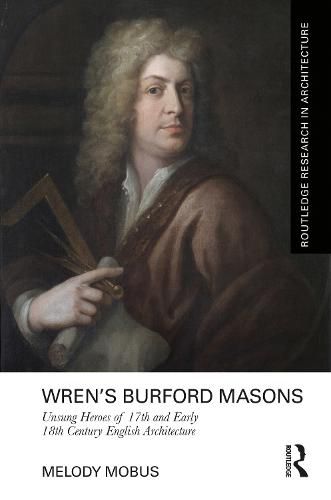Readings Newsletter
Become a Readings Member to make your shopping experience even easier.
Sign in or sign up for free!
You’re not far away from qualifying for FREE standard shipping within Australia
You’ve qualified for FREE standard shipping within Australia
The cart is loading…






This book shows, for the first time, the indispensable role of the Burford Masons, a group of master masons from the historic quarries around Burford, Oxfordshire, in creating some of the foremost buildings of the 17th and early 18th centuries.
The Burford Masons were involved in the construction of such outstanding buildings as St Paul's Cathedral, City churches, and Blenheim Palace, among many others. Whilst credit for many of these buildings generally rests with named architects, Sir Christopher Wren in particular, this book shows how reliant these designers were on their master craftsmen, sometimes involving them in the design process as their ideas evolved. The book further shows how the Burford Masons responded to the challenge of late payments, often of many years, becoming financiers in the process. It reveals how, as risk-taking businessmen, they effectively underpinned both public and private development financially, and how extraordinary success transformed their lives.
The reader will learn about the vital part played in the early modern period by master craftsmen of the calibre of the Burford Masons, despite the emergence of the architect as lead designer, whose fame has hitherto overshadowed them. As a result, this book will be a compelling read for anyone interested in architectural, construction or social history.
$9.00 standard shipping within Australia
FREE standard shipping within Australia for orders over $100.00
Express & International shipping calculated at checkout
This book shows, for the first time, the indispensable role of the Burford Masons, a group of master masons from the historic quarries around Burford, Oxfordshire, in creating some of the foremost buildings of the 17th and early 18th centuries.
The Burford Masons were involved in the construction of such outstanding buildings as St Paul's Cathedral, City churches, and Blenheim Palace, among many others. Whilst credit for many of these buildings generally rests with named architects, Sir Christopher Wren in particular, this book shows how reliant these designers were on their master craftsmen, sometimes involving them in the design process as their ideas evolved. The book further shows how the Burford Masons responded to the challenge of late payments, often of many years, becoming financiers in the process. It reveals how, as risk-taking businessmen, they effectively underpinned both public and private development financially, and how extraordinary success transformed their lives.
The reader will learn about the vital part played in the early modern period by master craftsmen of the calibre of the Burford Masons, despite the emergence of the architect as lead designer, whose fame has hitherto overshadowed them. As a result, this book will be a compelling read for anyone interested in architectural, construction or social history.